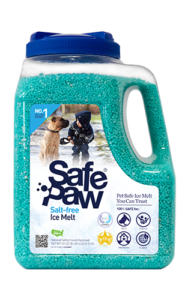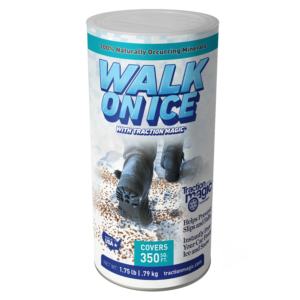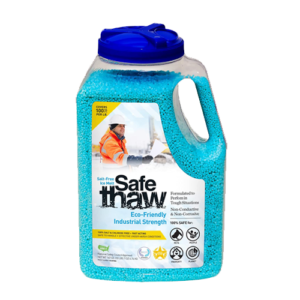Most Common Cold-Weather Injuries for Pets

You’ve done it. You’ve looked out the window at the snow, turned up the thermostat, and thought, “My dog is totally fine, they’ve got fur!”
As the veterinary community celebrates National Vet Tech Week (October 13–19, 2024)—a time dedicated to recognizing the caregivers who are literally the first to assess a pet’s injuries—this is a chance to share the top three issues frequently seen in the exam room every winter. Getting ahead of these issues means your pet stays healthy and cozy, right where they belong.
1. The Hidden Burn: Contact Freezing and Paw Pad Injuries
If a dog is doing the “paw dance”—holding up a paw and refusing to put weight on it—it’s often a painful emergency.
The ground is a villain in the winter. It’s not just cold; it’s an active heat thief. When a dog’s paw touches an extremely cold or frozen surface (ice, frozen asphalt, or metal), that surface rapidly pulls heat away from the tissue. This rapid cooling can cause frostbite (tissue freezing) or a severe chemical burn from de-icers.
- The Salt-Shock Factor: Those salt or calcium chloride crystals seen on sidewalks might look harmless, but they are highly corrosive and cause tiny chemical burns and cracks on a dog’s pads. These injuries are painful and make the pads far more vulnerable to true freezing injury and infection.
- The 20∘F (−6∘C) Danger Line: While frostbite risk begins at freezing, the American Veterinary Medical Association (AVMA) notes that once the temperature drops below 20∘F, all dogs are at risk of cold-related injury if exposed for too long. Short-haired, small, and elderly dogs are at risk even sooner.
The most common cold-weather injury seen by veterinary teams is the combined assault of corrosive de-icing salts and ‘contact freezing’ injury to the paw pads.
2. The Great Slip-and-Tear: Orthopedic Trauma
You know that feeling when you step on a patch of black ice? It’s not just humans who wipe out.
Every winter, veterinary practices see a spike in orthopedic injuries—specifically, torn ligaments and painful sprains—that happen because a quick run turned into a nasty fall.
- Cruciate Ligament Tears (ACL/CCL): The most common serious injury diagnosed is the Cranial Cruciate Ligament (CCL) tear in the knee. Picture a dog running full-speed on snow, suddenly slipping, and twisting their entire body to correct the fall. That sudden, uncontrolled rotation can tear the stabilizing ligament in the knee. This usually requires expensive surgery.
- Worsening Arthritis: For senior pets, cold doesn’t just make them stiff; it makes their joints hurt. They are less likely to fully extend their legs when running, which makes them more likely to slip and fall, exacerbating existing arthritis. It’s a cruel cycle of pain and instability.
Pet-Friendly Ice Melt

Pet Safe Ice Melt – Safe Paw
The Original and the #1 Pet and Child Safe Ice Melt for over 20 years. Guaranteed environmentally safe – will not harm waterways and sensitive wetlands.
3. The Silent Killer: Hypothermia
While the focus is often on the paws, the biggest threat to internal health is hypothermia, or dangerously low body temperature. This isn’t just a concern for pets left outside; it can happen during a seemingly normal walk or a long wait in a cold car.
Normal dog body temperature is around 101.5°F (38.6∘°C). Once their core temperature drops below 99°F (37.2∘°C), the body begins to shut down non-essential functions to protect the core.
Signs of Hypothermia (This is an Emergency!):
- Extreme Shivering: Uncontrollable shaking is the body’s last-ditch effort to create heat.
- Lethargy and Weakness: They become slow, confused, or unresponsive.
- Pale Gums: A sign of poor circulation and blood flow diversion.
- Cool to the Touch: Especially on the ears, belly, and paws.
Hypothermia is an internal emergency that requires immediate veterinary intervention to prevent organ failure. Always transport the animal to the clinic while gently warming them.
Veterinary Prevention Checklist
As the professionals who are often cleaning, bandaging, and monitoring these injuries, the primary message is simple: Prevention is the only way to win the winter.
- Protect the Paws: Instead of rushing out unprepared, invest in a quality pair of dog booties (ensure a proper fit!) or a pet-safe paw wax/balm, perhaps even a product like Safe Paw, to create a protective barrier against ice, snow, and corrosive salts. After every walk, wash the dog’s paws thoroughly to remove any clinging chemicals, and gently pat them dry, checking between the toes for ice balls or irritation.
- Shorten and Warm-up: If it’s below 25°F (−4∘°C), keep bathroom breaks quick and outdoor exercise minimal. For any real exercise, start with a 5-minute brisk walk on a leash to warm up those muscles before allowing a run, drastically reducing the risk of a tear.
- Bundle Up the Vulnerable: Small, short-haired, or senior dogs should wear a sweater or coat that covers from the base of the neck to the tail.
Conclusion
As veterinary professionals know, the assumption that a pet’s fur makes them impervious to cold weather is a major misconception that leads to preventable emergencies every winter. The three most frequently seen issues—painful paw pad injuries from corrosive de-icing salts and contact freezing, serious orthopedic trauma like CCL tears caused by slips on ice, and the life-threatening danger of hypothermia—are all highly manageable with proactive care.
To ensure a pet stays safe, prevention must be the priority. This involves creating a protective barrier on the paws, perhaps using a product like Safe Paw, and always washing them after walks.
This National Vet Tech Week (October 13–19, 2024), remember that a few extra minutes of preparation ensures a happy, healthy, and emergency-free cold season for your companion.
FAQs
Other Ice Melt Products
Walk On Ice
Prevent slips at home, work or on the go, The handy disposable canister can be taken everywhere, with the same 100% naturally occurring minerals that provide instant traction on ice or snow.

Safe Thaw
Imagine an ice melt you can put down and never worry about. It won’t harm pets, kids and your property. That’s Safe Thaw. Unlike anything else on the market, Safe Thaw can change how winter affects our planet.


